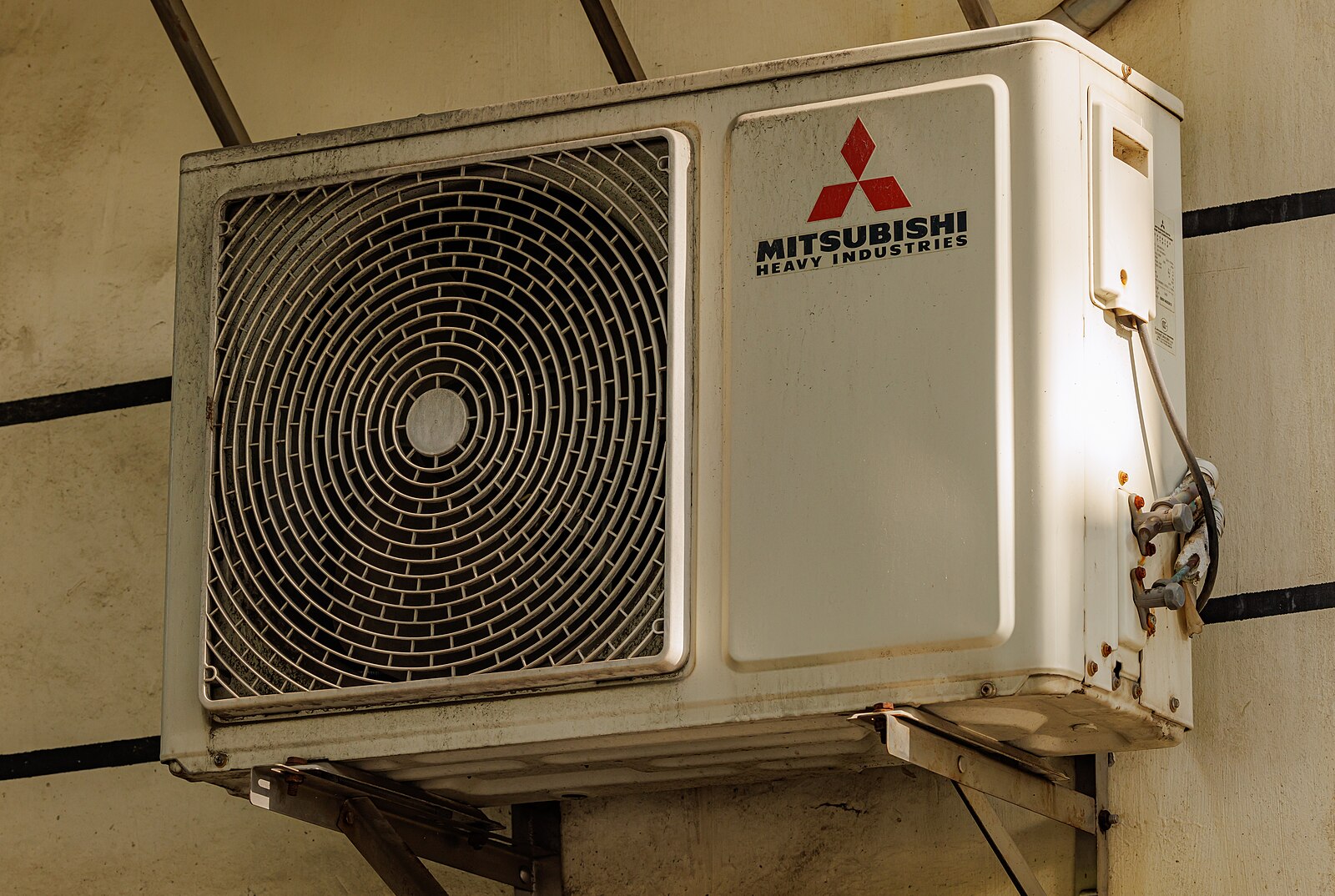The Mitsubishi BS Box, also known as a Branch Box or BC Controller, is a critical component in a Variable Refrigerant Flow (VRF) air conditioning system. It serves as the intelligent control system that manages the flow of refrigerant to the indoor units, ensuring efficient energy transfer and distribution throughout the system.
Understanding the Mitsubishi BS Box
The Mitsubishi BS Box is essentially a sophisticated refrigerant distribution and control system. It consists of a series of ports, each of which can be connected to one or more indoor units. The box also contains a variety of valves, including linear expansion valves (LEVs), which regulate the flow of refrigerant to each individual indoor unit.
Refrigerant Flow Management
 Image source: Mitsubishi ac By Dinkun Chen
Image source: Mitsubishi ac By Dinkun Chen
The heart of the Mitsubishi BS Box’s functionality lies in its ability to manage the flow of refrigerant throughout the VRF system. The LEVs within the box are controlled by stepper motors, which receive pulse signals from the branch box. By adjusting the position of these valves in proportion to the number of pulse signals received, the BS Box can precisely control the flow of refrigerant to each indoor unit, ensuring that the energy demand is met efficiently.
Configurations and Connectivity
The Mitsubishi BS Box is available in a range of configurations, with varying numbers of connections to accommodate different system requirements. The BC Controller, for example, is available with 4 or 6 connections, while the Master BC Controller offers 8, 12, or 16 connections. The Sub BC Controller also comes in 4 or 6 connection variants.
Specialized Versions
Mitsubishi also offers a specialized version of the BC Controller, known as the BC Controller With Port Isolation Valves. This model features factory-fitted valves on each port, allowing individual indoor units to be isolated. This feature enables installation or maintenance to be carried out in specific rooms without affecting the operation of the rest of the system.
Installation and Configuration
Proper installation and configuration of the Mitsubishi BS Box are crucial for the optimal performance and energy efficiency of the VRF system. The installation manual provides detailed instructions on how to install and connect the BS Box, as well as important safety precautions that must be followed.
Installation Steps
- Carefully unpack the Mitsubishi BS Box and inspect it for any damage or defects.
- Determine the appropriate location for the BS Box, ensuring it is easily accessible for maintenance and servicing.
- Mount the BS Box securely, using the provided mounting brackets and hardware.
- Connect the refrigerant piping from the outdoor unit(s) to the BS Box, ensuring proper sizing and sealing of the connections.
- Connect the refrigerant piping from the BS Box to the individual indoor units, again ensuring proper sizing and sealing.
- Connect the electrical wiring from the outdoor unit(s) and indoor units to the BS Box, following the wiring diagrams and local electrical codes.
- Perform a thorough leak test on all refrigerant connections to ensure there are no leaks.
- Evacuate the system to remove any non-condensable gases or moisture.
- Charge the system with the appropriate refrigerant, following the manufacturer’s specifications.
- Configure the BS Box settings, such as the number of connected indoor units and their capacities, using the provided controller or software.
- Test the system’s operation, ensuring all indoor units are functioning correctly and the BS Box is managing the refrigerant flow as intended.
Maintenance and Troubleshooting
Regular maintenance and prompt troubleshooting of the Mitsubishi BS Box are essential for maintaining the long-term performance and efficiency of the VRF system. This includes:
- Periodic inspection of refrigerant connections for any signs of leaks
- Cleaning of the BS Box’s internal components, such as the LEVs and stepper motors
- Verifying the proper operation of the BS Box’s control functions and settings
- Addressing any error codes or malfunctions promptly, following the manufacturer’s troubleshooting guidelines
By understanding the inner workings of the Mitsubishi BS Box and following best practices for installation, configuration, and maintenance, you can ensure the optimal performance and energy efficiency of your VRF air conditioning system.
